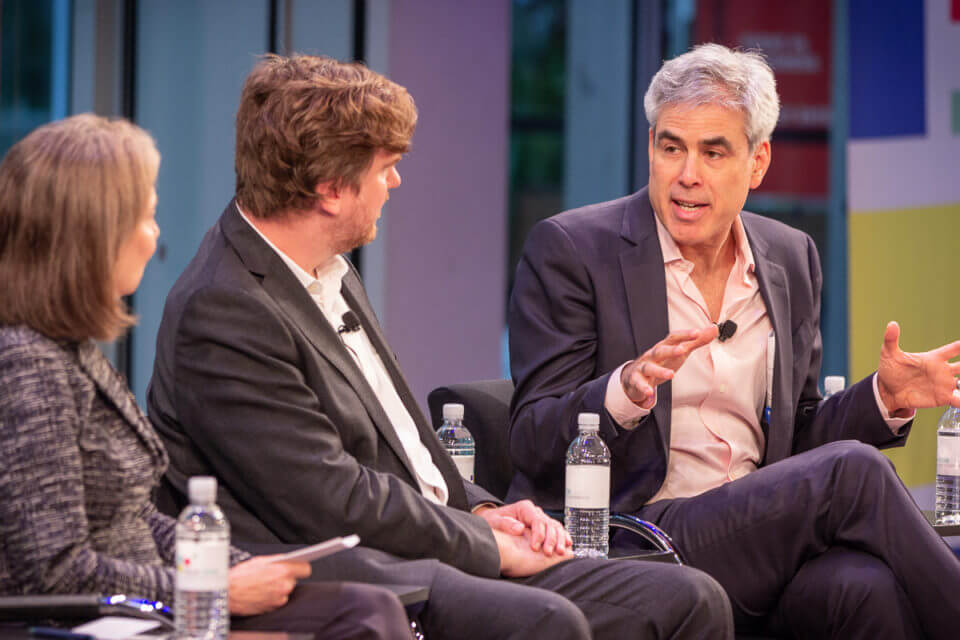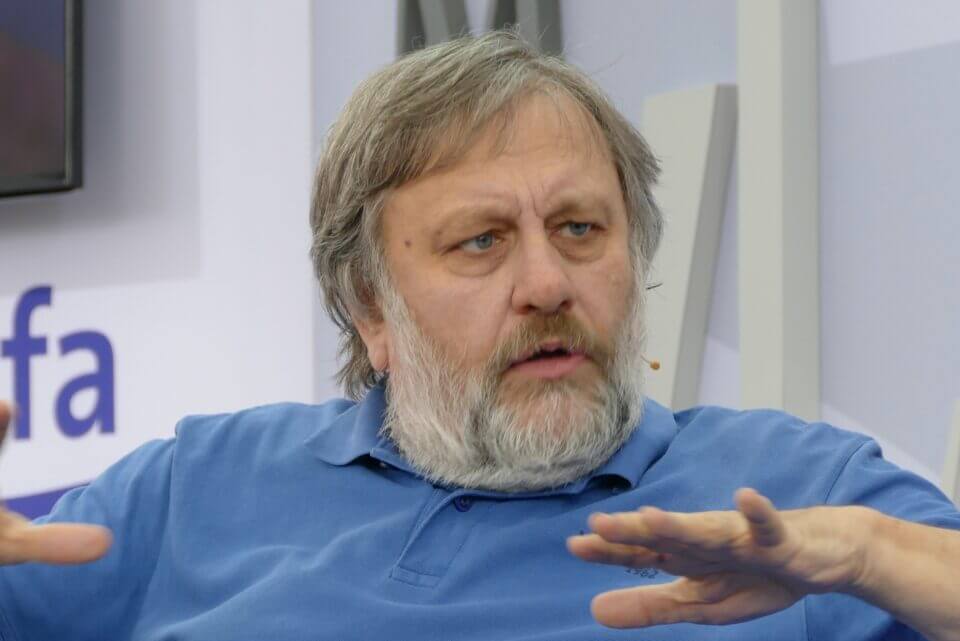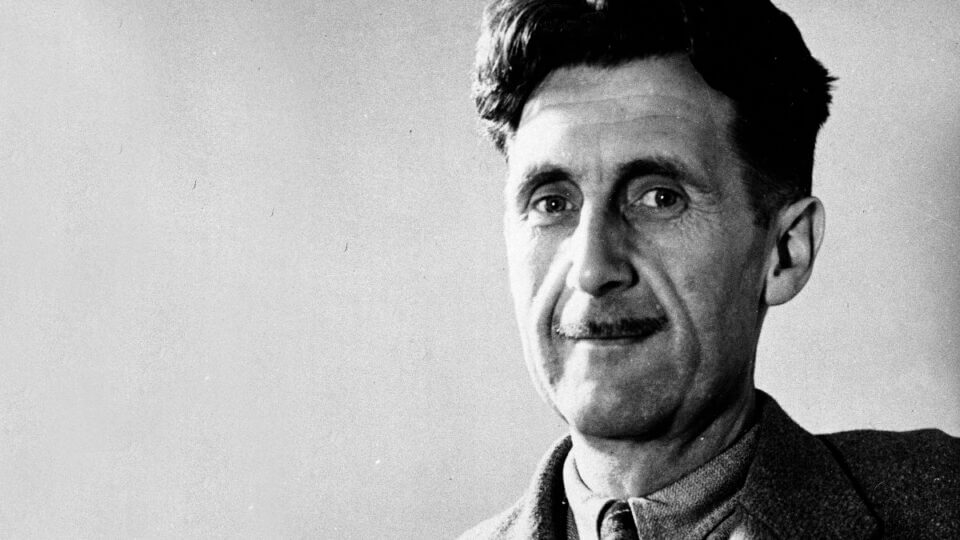
“In a sense, the Founding Fathers feared democracy because of the tendency of people to be carried away by their passion and easily led astray by demagogues, and I think that our modern polarization, augmented by social media, could well bring their worst fears to reality.”
Jonathan Haidt is a social psychologist whose research focuses on moral psychology. He is currently serving as the Thomas Cooley Professor of Ethical Leadership at the Stern School of Business of New York University. Much of Dr. Haidt’s work had explored how different cultures viewed morality, before he began studying the different psychological features of progressives and conservatives. He has become an expert on political polarization. Although he was a progressive for much of his life, Dr. Haidt now examines all political groups with equal scrutiny and considers himself to be a centrist. He is the author of three books for general audiences: The Happiness Hypothesis: Finding Modern Truth in Ancient Wisdom, The Righteous Mind: Why Good People Are Divided by Politics and Religion, and, with Greg Lukianoff, The Coddling of the American Mind. Dr. Haidt is also the co-founder of the Heterodox Academy, an organization that encourages ideological diversity at universities. He joins Merion West’s Erich Prince to discuss The Righteous Mind, political tribalism, his personal journey to the center of the political spectrum, and the sources of political division today.
Dr. Haidt, thank you for speaking with us today. I’d like to begin with your book The Righteous Mind. One of the things that struck me, in particular, while I was reading was this Robber’s Cave experiment which you discuss: the researchers take a group of children from the same middle-class, Protestant background in Oklahoma and assign them to these different teams and have them compete. Not long after, they’re basically coming to blows with one another. And that’s before something like ideology or some of these big questions get into play; this is just an arbitrary division of two groups of roughly the same kids. For people who aren’t as familiar with that experiment, could you talk about why you chose to include this example in your book and how you think it might illustrate some of the divisions that we’re seeing today politically?
It’s a famous experiment in social psychology that is used to illustrate the way that human tribalism works. Human beings evolved in groups. Certainly, over the last couple hundred thousand years there was a lot of group-versus-group competition. All of us alive today are not just the descendants of the individuals who out-competed the individual next to them; rather, we are the descendants of the groups that out-competed the groups next to them, and our minds bear the signs of that evolutionary process.
You can see it very clearly in the ways that groups of boys initiate other groups of boys into an identity. Fraternity initiations tend to recreate many elements of initiation rites in traditional cultures around the world. Girls groups are less intense and less violent in their initiations, but they still have their initiations as well.
So, the Robber’s Cave experiment is important for showing how quickly one can create tribal markers and intergroup competition, but it’s especially important for its conclusion. Muzafer Sherif, the social psychologist who ran it, arranged some challenges and tasks where the boys on the two teams had to work together to solve them, and that shut down the competition very quickly and turned them into cooperators. That’s the inspiring lesson.
Now, I should add that this experiment, like a number of experiments in social psychology, had certain elements and flaws that were left out of the report. The important one here is that they tried this once or twice before and didn’t get this [result]. Social psychologists are people too, and they are subject to all the same problems of motivated cognition and motivated reasoning. So, it may not be as easy as it seems to get this kind of behavior. But when you read the descriptions, we all recognize it. It’s clear that this is a real phenomenon.
Are there any other interesting lessons from this experiment?
In the Robber’s Cave experiment, the two groups of boys were in different physical locations in a state park and one of the groups made some improvements into—I think it was a baseball field. They made the lines clearer, or they cleared some brush—whatever it was.
There is a deep sense that when you put some effort into something, when you’ve cultivated something and put some work into something, that you own it. Property rights have a deep psychological basis. Human beings are clearly territorial creatures: we mark territory, we improve territory, and then we defend it, often violently. It’s fascinating that even in a group of 12-year-old boys you can see some of the psychology of property and territoriality emerging.
I want to ask you about your personal journey from being a partisan Democrat to becoming more open to conservative ideas. You mention in the book that around 2005 you were reading a book, and it was bringing up a lot of conservative ideas and you said, “Okay, I can see where they’re coming from a bit.” Can you talk a little more about this?
Sure. I’m a stereotypical progressive in the sense that I was raised in the suburbs of New York City; I went to Yale; I’m Jewish; I went to graduate school; I’m a professor; I’m a social psychologist. I’m very high on openness to experience, love of variety and diversity and travel. I have your standard left-leaning brain.
But because I chose to study moral psychology and I looked at how cultures differ—including India and America, and then including social class—I began to notice that the American Left and Right got further and further apart and became like two different countries in the 1990’s. At first, I was on one team. I was very much on the progressive team. After the Democrats lost two presidential elections in a row that I thought they should have won (namely, 2000 and 2004), I decided that I would switch my research away from cultural psychology and move it to political psychology in order to help the Democrats win more elections by talking more intelligently, or more perceptively, about moral psychology.
Al Gore and John Kerry were terrible at it; they seemed to think that the way to win voters is to say that their programs will give them more money, and that’s not what an American presidential election is about. It should be more of a quasi-religious affair in which you touch their hearts and inspire them with a vision of what the country can be. So, I began to teach a course on political psychology at the University of Virginia, a graduate seminar.
While preparing for that course, I happened to be in New York City in December or January right after the [2004] election. I happened to be in The Strand book store, and I happened to go to the political science section and saw a book called Conservatism by an excellent intellectual historian named Jerry Muller. I started to read the introduction, and it just made so much sense to me as a social scientist. It pointed out certain enduring properties of social systems and social change and how it is that you have one group that tends to push for change, another group that tends to say, “Slow down.” This conservative group tends to see things that the progressive group doesn’t see. It was like the scales fell from my eyes; it all made so much sense.
That was the beginning of my commitment to try to understand the conservatives from the inside, not to demonize them from the outside. As I began subscribing to conservative magazines and reading the best conservative thoughts, I realized that you can’t really understand a complex question until you’ve actually heard from people on the other side. It seems obvious when you say it in the abstract, and it’s clear when John Stuart Mill says it over and over again in On Liberty. But until you actually listen to intelligent people who see things differently from you and get that experience of learning something new, it hadn’t really fully hit me.
That sounds like a lot of the work you’re doing now with your most recent book as well.
That’s right! I would say most of my work since then has been an effort to help people see that we are all living within one or more moral matrices which clue us in to certain moral properties of our social world but blind us to others. We can coexist with others if the temperature is not too high, if the hatred is not too strong. What we’ve seen steadily since the 90’s, and especially in the last two years, is that as the temperature rises, people, no matter what their I.Q., become so motivated to find evidence against the Other that they will believe almost anything.
This makes us incredibly easy to dupe. It makes us ready to embrace a narrative about a white boy in a MAGA hat. It makes us reluctant to admit that things are more complicated, and I think it could well be the destroyer of democracies. In a sense, the Founding Fathers feared democracy because of the tendency of people to be carried away by their passion and easily led astray by demagogues, and I think that our modern polarization, augmented by social media, could well bring their worst fears to reality.
I often ask this question to political science folks, like Charles Wheelan from the Centrist Project, for example. They tend to focus on institutional explanations for polarization—from gerrymandering to money in politics to closed versus open primaries. When we explain polarization today or how we got here, to what degree do you see it as an intersection between these political institutions and the underlying psychology?
To understand where we are in history, you have to look at both the changing cultural patterns and forces, changing technology, changing institutions, and innate human psychology. The best place to start is to recognize that the late 20th century was a historical anomaly. I like to look at democracies as large, complex assemblages that should not exist, that should not survive. What we have to understand for large, diverse democracies such as ours is what allows us to beat the odds, what allows us to hold together.
So, if you look at forces pulling us together and forces pulling us apart and keep your eye on the balance, then I think you’ll see some troubling things. We’ve had periods of extraordinary dysfunction and polarization before: most notably the Civil War, but also, from what I understand, the period of Andrew Jackson’s presidency was also quite divisive and chaotic. And, of course, the 1960’s were extremely divisive with a lot more violence than we have today.
If we look at the centripetal forces pulling us together, they were extremely strong in the late 20th century. We were governed by a generation that had lived through World War II, and nothing creates cooperation like fighting an external enemy; that’s one of the lessons of the Robber’s Cave experiment. So, we had the legacy of World War II and the Greatest Generation, and they were replaced by the Baby Boomers, whose political experiences were more defined by fighting each other than by fighting a common enemy.
We had a centralized media system, which we certainly didn’t have for our first 150 years. Temporarily, we had three center-left networks. We all got our news from the same source. In the 80’s, that began to break down with cable television and, of course, the Internet and now social media spectacularly fragment information sources and devastate trust in mainstream information sources.
You sound a bit like John Boehner there in his interview with Politico Magazine after leaving office when he discusses how he believes that a polarized media climate is responsible for a lot of the things we are seeing.
It’s one of the major contributors. I’m confident about that. There are many factors, but the changing media environment—going from three television networks that were legally bound to avoid politics or give equal time to both sides to a free-for-all in which you have narrow casting and some bad-faith actors as well—is huge.
There’s also diversity. Diversity tends to be divisive. If it’s managed well, it can bring enormous benefits, but if it’s managed badly, it’s divisive. America had the lowest immigration rates in our history from the 1920’s until the 1960’s. We had the consolidation of a sort of dominant WASP culture, one in which many immigrant groups such as Jews (which is my family) or Koreans (my wife’s family) did very, very well. But that began to fragment in the 80’s and 90’s, and now we do not have any dominant culture. Running a diverse, secular democracy in a time of babel where there’s no common language is very difficult.
So, for a large number of reasons, we should see the late 20th century as an anomaly, and no one alive today really remembers before the World War II era. We all ask, “What happened? What happened?” The sense is that we’ve lost the centripetal forces, and now all we have are the centrifugal forces.
With this talk of Howard Schultz potentially running for president, I saw Larry Sabato tweeted about this recurring debate in political science—the so-called “myth” of the independent voter—where he was arguing that perhaps somebody had told Howard Schultz that 40 percent of the electorate was independent, but perhaps people like to say they’re independent if they are actually partisans. Is that a question you’ve thought about? If people do like to self-identify as independents even if they act like partisans in the ballot box, what might be some of the psychology going on there?
I think there are many sources that show us that there is a very large group of citizens in the middle, but no one has yet been able to turn them into an active electoral block, and I think there’s two main reasons for that. One is that many and, perhaps, most of them are what political scientists call “leaners.” While they might call themselves centrist or moderate or unaligned, if you push them and they say, “I lean left” or “I lean right,” they tend to vote pretty similarly to those who just come out and say they are on the Left or the Right.
The other large block of people in the middle are people who really don’t give a damn about politics, don’t read the newspaper, don’t follow current events, and are essentially political dark matter. They have no impact on our [political] universe. Then I think there are some true centrists—and I would include myself as one—who do follow politics, who do care a lot, and are turned off by illiberal elements in both parties. I think it may be possible in the future for some leader or some party to unite the center-right and center-left. I think that may be very far in the future.
If the Republicans moved pretty far to the right in the 90’s and the early 2000’s, and the Democrats might be shifting now—that could open something up in the future where many people who feel politically homeless but are not dark matter and do care about politics can be united. But I don’t think that will happen any time soon.
There’s an interesting article in Reason by author Ronald Bailey from a while back—2004—but it’s an argument I’ve seen in a number of other places since then. In this piece, the author suggests that certain academics, such as Cleveland State professor Nancy Meyer-Emerick, may be pathologizing conservatism. As someone who used to be associated with the Left and then has come to treat all of the political groups with equal scrutiny, do you think that is a sound concern among some conservatives—that there is an effort by some academics to pathologize some of the things that might underlie a conservative worldview?
Yes, I think that’s very clear. There’s the apocryphal story about the British tabloid with the headline “Fog in Channel, Continent Cut Off.” If you have an insular view and you define yourself as the center of the world, you see others as strange or distant. As the academy has gone from leaning Left throughout the 20th century to being almost uniformly on the Left in many social sciences and humanities today, we have been more subject to that view that we are normal. And the puzzle for us, as scholars, is to explain conservatives. “What happened to them? Why don’t they share our passion for diversity and equality and fusion cuisine?”
I think there is even some new evidence on that. There is a study that will be coming out by Yoel Inbar, I believe, that looked at publications on politics and did find at least some evidence that scholarship tends to take the Left as the baseline or as normal and ask, “How do we explain the Right?” I do think it’s a problem, and that’s one of the reasons that I co-founded Heterodox Academy: I think we get better social science when we have diversity within the social sciences.
Thank you so much for your time today, Dr. Haidt.
My pleasure, Erich. Thank you.












This was great. Exactly the kind of discourse that i hope will see this country through all of this.